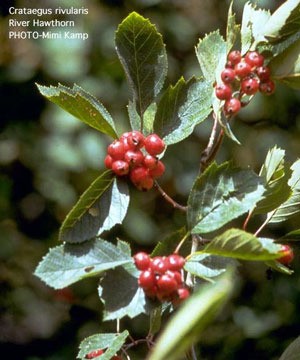
| Botanical Name: |
| Crataegus |
| Common names: |
| Hawthorn Tree, May Blossom |
| Description: |
| Hawthorns are trees native to Europe, North Africa, the Mediterranean and Western Asia. They now grow widely in parts of the United States as well. The tree has long been considered sacred in parts of the Middle East, probably from a tradition that suggests it furnished the Crown of Thorns worn by Jesus during the Crucifixion. Hawthorn can grow to a height of 30 feet or more. It earned one of its common names, May Blossom, because it produces small, highly aromatic, white colored flowers in May, followed in the fall by brilliant red fruit (haws) that resemble tiny apples. |
| Life Cycle: |
| bushy tree |
| Exposure: |
| varies by species |
| Cultivation: |
| Hawthorn trees have been extensively hybridized and now consist of more than 1000 different species with hundreds of different growing requirements. Before purchasing a tree, check with your supplier for detailed growing instructions and to ensure the species you select is suited to your climate zone. |
| Propagation: |
| haws, hard-wood cuttings |
| Parts Used: |
| flowers, leaves and haws |
| Harvesting and Storage: |
| Harvest the flowers when they appear in the spring and the berries in the fall (use raw or cooked). Harvest leaves for medicinal purposes as needed. |
| Medicinal Uses: |
| diuretic; astringent; used in treating high-blood pressure, diabetes, kidney inflammations, intestinal upsets, and as a tobacco substitute and appetite suppressant. Never use hawthorn for medicinal purposes without consulting your doctor. |
| Culinary Uses |
| Leaves: can be cooked like greens; Haws: used to make jams and jellies; Flowers: garnishes in salads and desserts; Seeds: roasted like coffee |
| Other Uses: |
| hedges, wood for fuel and fine-grained carvings and inlays |

Add your voice! Click below to comment. ThriftyFun is powered by your wisdom!